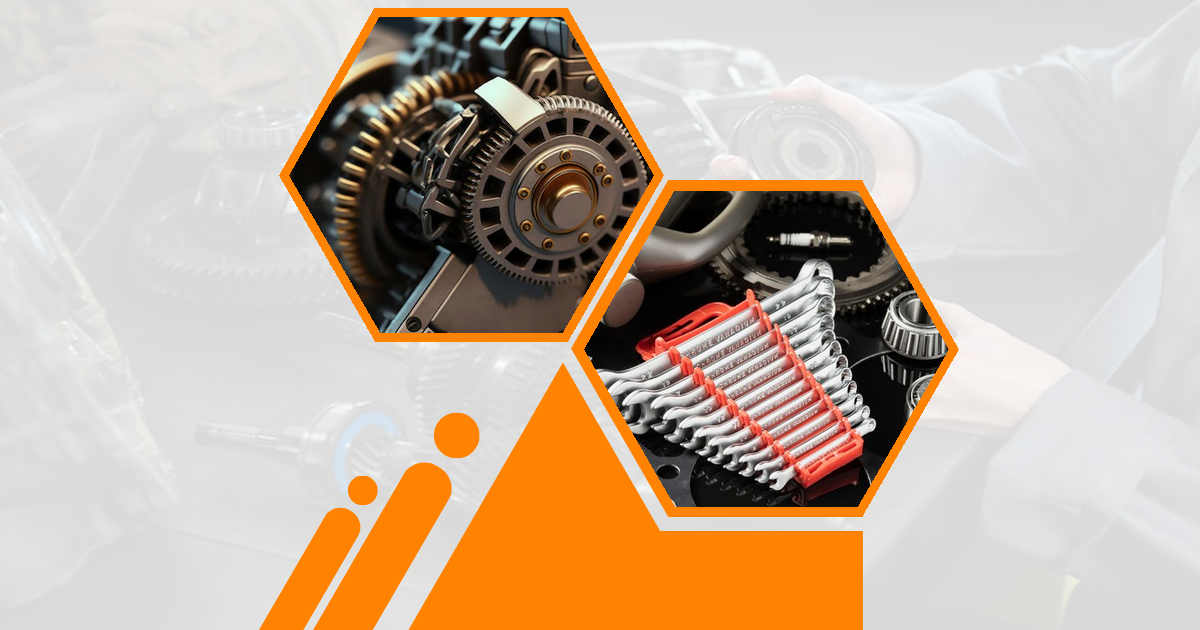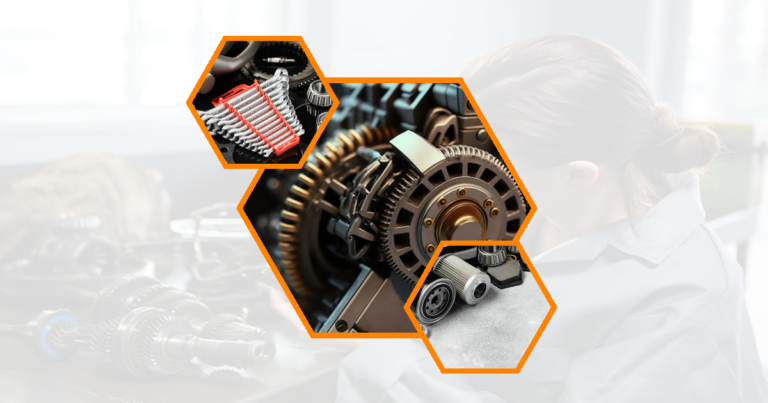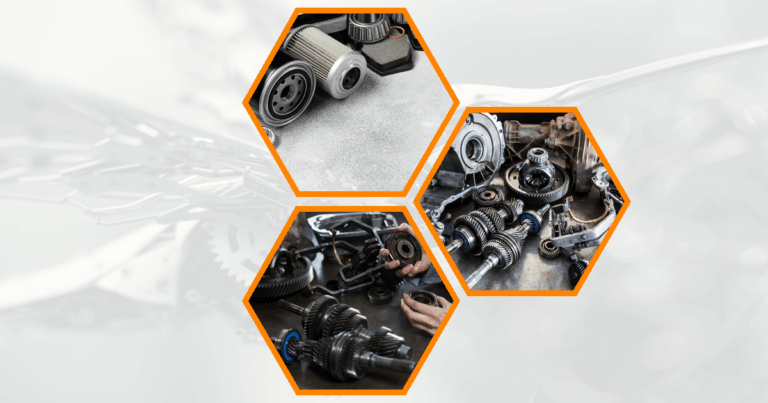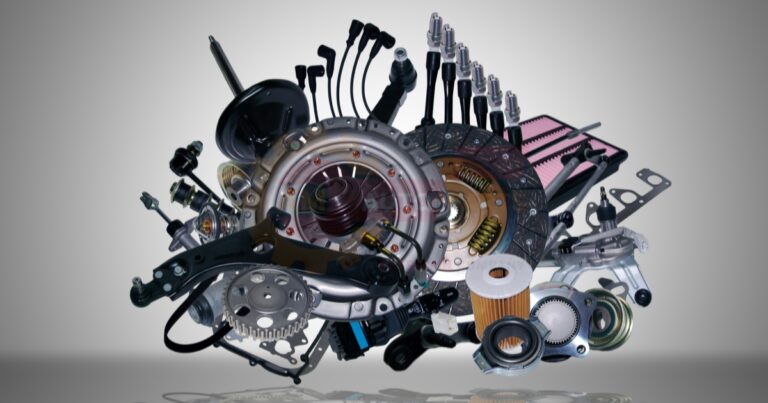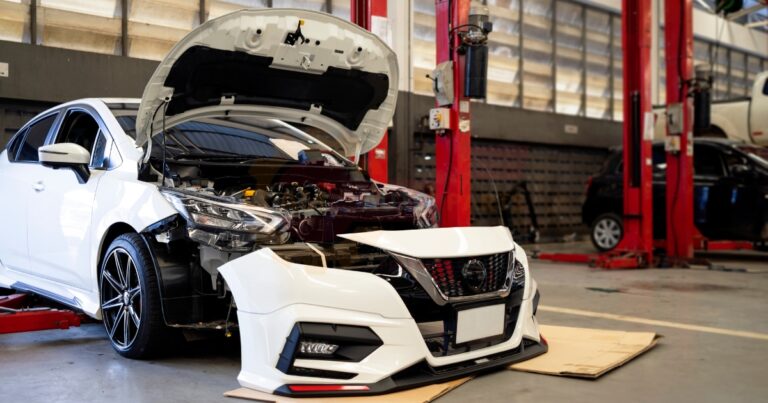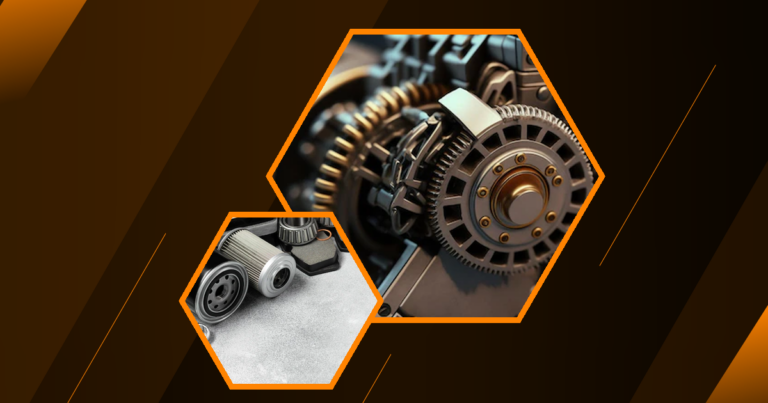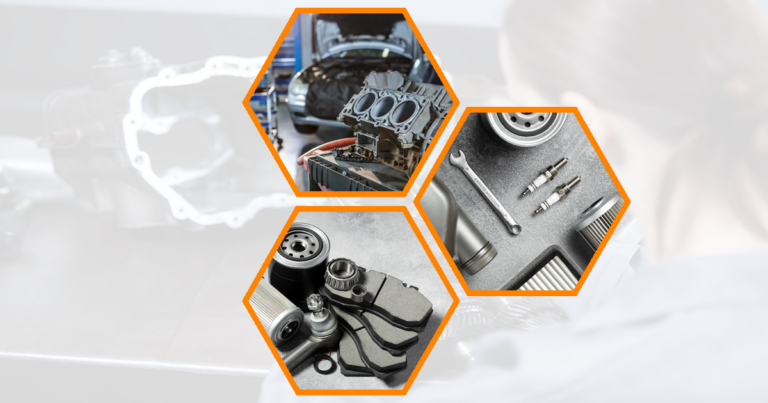Automatic transmissions have revolutionized the driving experience, offering convenience and efficiency. This article delves into the intricacies of automatic transmissions, exploring their necessity, components, functionality, and types. We will also discuss the advantages and disadvantages of automatic transmissions, providing a comprehensive understanding of this essential automotive technology.
Why Automobiles Need Transmissions
Power and Efficiency Management
Transmissions are crucial for managing power and efficiency in vehicles. They allow the engine to operate within its optimal power range, ensuring that the vehicle can accelerate smoothly and maintain speed efficiently. Without a transmission, the engine would struggle to provide the necessary power for different driving conditions.
- Transmissions help in distributing engine power effectively.
- They ensure the engine runs at optimal RPMs for fuel efficiency.
- They allow for smooth acceleration and deceleration.
Speed Control and Adaptation
Transmissions also play a vital role in controlling speed and adapting to various driving conditions. By adjusting gear ratios, transmissions enable vehicles to handle different terrains and speeds without overworking the engine. This adaptability is essential for both city driving and highway cruising.
- Transmissions adjust gear ratios for different speeds.
- They help in maintaining engine performance across various terrains.
- They contribute to a smoother driving experience.
What is an Automatic Transmission
An automatic transmission is a type of gearbox that automatically changes gear ratios as the vehicle moves. This allows the driver to focus on steering and acceleration without manually shifting gears. Automatic transmissions use a combination of hydraulic systems, sensors, and electronic controls to manage gear changes seamlessly.
- Automatic transmissions shift gears without driver input.
- They use hydraulic systems and sensors for smooth operation.
- They enhance driving comfort and convenience.
Evolution of Automatic Transmissions
The evolution of automatic transmissions has been marked by significant technological advancements. From the early days of simple hydraulic systems to modern electronically controlled units, automatic transmissions have become more efficient and reliable. Innovations such as continuously variable transmissions (CVT) and dual-clutch systems have further enhanced their performance.
- Early automatic transmissions relied on basic hydraulic systems.
- Modern units incorporate electronic controls for precision.
- Innovations like CVT and dual-clutch systems improve efficiency.
Parts of an Automatic Transmission
Transmission Casing
The transmission casing is the outer shell that houses all the components of the transmission. It provides structural support and protection from external elements. The casing is typically made of aluminum or cast iron for durability and heat resistance.
- The casing protects internal components from damage.
- It is made from durable materials like aluminum or cast iron.
- It helps in dissipating heat generated during operation.
Torque Converter
The torque converter is a critical component that connects the engine to the transmission. It allows the engine to continue running while the vehicle is stationary and provides a smooth transfer of power when accelerating.
Pump (Impeller)
The pump, or impeller, is part of the torque converter that pushes transmission fluid to create a fluid coupling between the engine and transmission. This fluid motion is essential for transferring power smoothly.
- The pump circulates transmission fluid for power transfer.
- It creates a fluid coupling between the engine and transmission.
- It ensures smooth acceleration and deceleration.
Turbine
The turbine is another component of the torque converter that receives the fluid from the pump. It transfers the fluid’s energy to the transmission, allowing the vehicle to move.
- The turbine receives fluid from the pump.
- It transfers energy to the transmission.
- It plays a key role in vehicle movement.
Stator (Reactor)
The stator, or reactor, redirects the fluid returning from the turbine to the pump, enhancing the efficiency of the torque converter. It helps in multiplying torque, providing better acceleration.
- The stator redirects fluid for improved efficiency.
- It multiplies torque for better acceleration.
- It enhances the overall performance of the torque converter.
Torque Converter Clutch
The torque converter clutch locks the torque converter at higher speeds, creating a direct connection between the engine and transmission. This improves fuel efficiency and reduces heat generation.
- The clutch locks the torque converter at high speeds.
- It creates a direct engine-transmission connection.
- It improves fuel efficiency and reduces heat.
Planetary Gear Sets
Planetary gear sets are the heart of an automatic transmission, providing different gear ratios. They consist of a sun gear, planet gears, and a ring gear, working together to create various speed and torque combinations.
- Planetary gear sets offer multiple gear ratios.
- They consist of sun, planet, and ring gears.
- They enable smooth gear transitions.
Brake Bands and Clutches
Brake bands and clutches control the engagement and disengagement of gears within the transmission. They ensure that the correct gear is selected based on driving conditions.
- Brake bands and clutches manage gear engagement.
- They ensure smooth gear transitions.
- They adapt to different driving conditions.
Hydraulic System
The hydraulic system in an automatic transmission uses pressurized fluid to control gear shifts. It operates the clutches and bands, ensuring precise and timely gear changes.
- The hydraulic system controls gear shifts with fluid pressure.
- It operates clutches and bands for smooth transitions.
- It ensures precise gear changes.
How an Automatic Transmission Works
Fluid Coupling Process
The fluid coupling process in an automatic transmission involves the torque converter, which uses transmission fluid to transfer power from the engine to the transmission. This process allows for smooth acceleration and deceleration without manual gear changes.
- The torque converter uses fluid to transfer power.
- It enables smooth acceleration and deceleration.
- It eliminates the need for manual gear changes.
Gear Shifting Mechanism
The gear shifting mechanism in an automatic transmission is controlled by a combination of hydraulic systems and electronic sensors. These components work together to select the appropriate gear based on speed, load, and driving conditions.
- Gear shifts are controlled by hydraulic systems and sensors.
- The mechanism selects gears based on driving conditions.
- It ensures optimal performance and efficiency.
Electronic Control Unit (ECU) Role
The Electronic Control Unit (ECU) plays a crucial role in managing an automatic transmission. It processes data from various sensors to determine the best gear for the current driving situation, ensuring smooth and efficient operation.
- The ECU processes sensor data for gear selection.
- It ensures smooth and efficient transmission operation.
- It adapts to changing driving conditions.
Gears in an Automatic Transmission
Primary Gear Ratios
Primary gear ratios in an automatic transmission determine the vehicle’s speed and torque. These ratios are selected based on the driving conditions, providing the necessary power and efficiency.
- Primary gear ratios affect speed and torque.
- They are selected based on driving conditions.
- They ensure optimal power and efficiency.
Overdrive Gears
Overdrive gears are used in automatic transmissions to reduce engine RPMs at high speeds, improving fuel efficiency and reducing engine wear. They are typically engaged during highway driving.
- Overdrive gears reduce engine RPMs at high speeds.
- They improve fuel efficiency and reduce engine wear.
- They are ideal for highway driving.
Types of Automatic Transmissions
Conventional Automatic Transmission
Conventional automatic transmissions use a torque converter and planetary gear sets to provide smooth and efficient gear changes. They are the most common type of automatic transmission found in vehicles today.
- Conventional automatics use torque converters and gear sets.
- They offer smooth and efficient gear changes.
- They are widely used in modern vehicles.
Automated Manual Transmission (AMT)
Automated Manual Transmissions (AMT) combine the features of manual and automatic transmissions. They use an electronic control unit to automate gear shifts, providing the convenience of an automatic with the efficiency of a manual.
- AMTs combine manual and automatic features.
- They automate gear shifts with electronic controls.
- They offer convenience and efficiency.
Continuously Variable Transmission (CVT)
Continuously Variable Transmissions (CVT) use a belt and pulley system to provide an infinite number of gear ratios. This allows for seamless acceleration and improved fuel efficiency.
- CVTs use a belt and pulley system for gear ratios.
- They offer seamless acceleration.
- They improve fuel efficiency.
Dual-Clutch Transmission (DCT)
Dual-Clutch Transmissions (DCT) use two separate clutches for odd and even gear sets, allowing for faster and smoother gear changes. They are popular in performance vehicles for their quick response.
- DCTs use two clutches for fast gear changes.
- They offer smooth and quick transitions.
- They are favored in performance vehicles.
Intelligent Manual Transmission (iMT)
Intelligent Manual Transmissions (iMT) provide the control of a manual transmission with the convenience of an automatic. They use sensors and actuators to automate clutch operation, allowing for manual gear selection without a clutch pedal.
- iMTs offer manual control with automatic convenience.
- They automate clutch operation with sensors.
- They allow for manual gear selection without a pedal.
Advantages of Automatic Transmissions
Ease of Use
Automatic transmissions are easy to use, requiring minimal driver input for gear changes. This makes them ideal for city driving and stop-and-go traffic, where frequent gear shifts are necessary.
- Automatics require minimal driver input.
- They are ideal for city driving.
- They simplify stop-and-go traffic.
Improved Fuel Efficiency
Modern automatic transmissions are designed to optimize fuel efficiency by selecting the best gear for the driving conditions. This reduces fuel consumption and emissions, making them environmentally friendly.
- Automatics optimize fuel efficiency.
- They reduce fuel consumption and emissions.
- They are environmentally friendly.
Smoother Driving Experience
Automatic transmissions provide a smoother driving experience by eliminating the need for manual gear changes. This results in less driver fatigue and a more comfortable ride.
- Automatics eliminate manual gear changes.
- They reduce driver fatigue.
- They offer a more comfortable ride.
Disadvantages of Automatic Transmissions
Higher Initial Cost
Automatic transmissions are generally more expensive than manual transmissions, both in terms of initial purchase price and maintenance costs. This can be a significant consideration for budget-conscious buyers.
- Automatics are more expensive than manuals.
- They have higher initial purchase costs.
- Maintenance can also be more costly.
Potential for Complex Repairs
The complexity of automatic transmissions can lead to more complicated and costly repairs. Specialized knowledge and tools are often required, which can increase repair times and expenses.
- Automatics can require complex repairs.
- Specialized knowledge and tools are needed.
- Repairs can be costly and time-consuming.
Less Driver Control
Automatic transmissions offer less control over gear selection compared to manual transmissions. This can be a disadvantage for drivers who prefer a more engaged driving experience.
- Automatics offer less gear control.
- They may not suit drivers who prefer engagement.
- Manual transmissions provide more control.
Maintenance Tips for Automatic Transmissions
Regular Fluid Checks and Changes
Regularly checking and changing transmission fluid is essential for maintaining the performance and longevity of an automatic transmission. Clean fluid ensures smooth operation and prevents overheating.
- Regular fluid checks are essential for performance.
- Clean fluid prevents overheating.
- It ensures smooth transmission operation.
Avoiding Overheating
Overheating can cause significant damage to an automatic transmission. Ensuring proper cooling and avoiding excessive loads can help prevent overheating and extend the transmission’s lifespan. Gearbox operation explained A gearbox helps change how fast a car moves by switching between different sized gears it works like changing bike gears to make pedaling easier or harder Gasoline engine operation A gasoline engine works by mixing fuel with air then igniting it with a spark to create small explosions that push pistons and make the engine run
Wheel guides automobile help cars stay on the right path They make sure vehicles move smoothly and safely on roads Automotive counterfeit detection helps find fake car parts It keeps drivers safe by spotting copies of real car pieces
Crankshaft camshaft differentiation A crankshaft turns the up-and-down motion of pistons into spinning motion while a camshaft controls the opening and closing of engine valves Camshaft valve timing controls when engine valves open and close This timing affects how well the engine breathes and performs
Vibration dampening mechanisms help reduce shaking and noise in machines and vehicles These devices make things run more smoothly and quietly by absorbing unwanted movement
- Overheating can damage transmissions.
- Proper cooling is essential.
- Avoid excessive loads to prevent overheating.
Future of Automatic Transmissions
Integration with Electric Powertrains
The future of automatic transmissions is closely linked with the development of electric powertrains. As electric vehicles become more prevalent, transmissions will need to adapt to new power delivery systems and efficiency requirements.
- Future transmissions will integrate with electric powertrains.
- They will adapt to new power delivery systems.
- Efficiency requirements will drive innovation.
Advanced Materials and Design
Advancements in materials and design will continue to improve the performance and efficiency of automatic transmissions. Lightweight materials and innovative designs will enhance durability and reduce energy consumption.
- Advanced materials will improve transmission performance.
- Lightweight designs will enhance durability.
- Innovations will reduce energy consumption.
FAQs
How does an automatic transmission shift gears?
An automatic transmission shifts gears using a combination of hydraulic systems and electronic controls. These systems work together to select the appropriate gear based on speed, load, and driving conditions. This process ensures smooth and efficient gear changes without driver input.
Are automatic transmissions more fuel-efficient than manual?
Modern automatic transmissions are often more fuel-efficient than manual transmissions. They are designed to optimize gear selection for the best fuel economy, reducing fuel consumption and emissions. However, the efficiency can vary depending on the specific transmission type and driving conditions.
How often should I service my automatic transmission?
It is recommended to service your automatic transmission every 30,000 to 60,000 miles, depending on the manufacturer’s guidelines. Regular servicing includes checking and changing the transmission fluid, inspecting the transmission for leaks, and ensuring all components are functioning correctly. Regular maintenance helps prevent costly repairs and extends the transmission’s lifespan.
